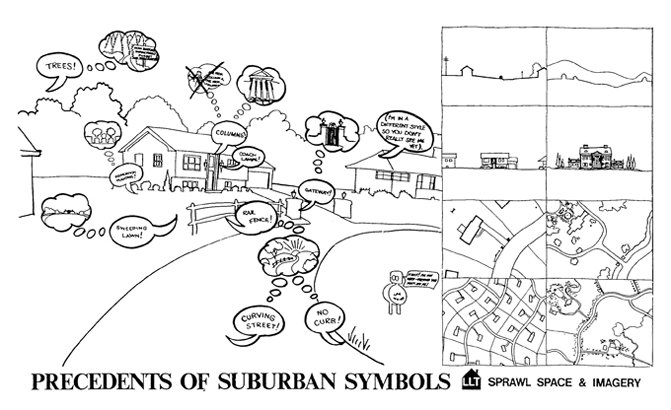"Learning from Levittown"
“Learning from Levittown” is a lesser known studio and study by Denise Scott Brown and Robert Venturi. Similar to their “Learning from Las Vegas” studio, they “asked students to study Levittown (and other residential communities) not only as a physical place but as a symbol of popular culture. By “popular,” they meant the majority of Americans , as opposed to the rich, and “culture” referred to the tastes and values of that population. (Dianne Harris. Second Suburb : Levittown, Pennsylvania. University of Pittsburgh Press, 2010.) This studio took place in 1970, and what they discovered in visiting Levittown a couple decades after its construction is that the homes didn’t look like their models. “‘Learning fromLevittown’ was also political because it responded to the shortcomings of urban renewal and the failures of affordable housing, repudiating a 1960s modernism of bulldozing and building that ignored the existing environment. (Harris). This relates back, even more decades later, to Ellen Dunham Jones and the book Retrofitting Suburbia. “Many of the retrofits produced to date have in fact been incremental and indicative of both gradual demographic shifts and public efforts to induce change. For instance, the original Levittowns have added not only countless additions to individual houses, but also multi unit housing for seniors as inhabitants have aged.” (Dunham-Jones, 40). Dunham-Jones prompts for re-development that densifies the suburbs into walk-able areas that seek to reverse the ‘sprawl’ of the suburban spur.


Comments
Post a Comment